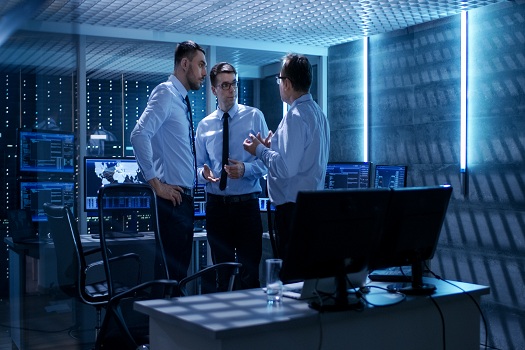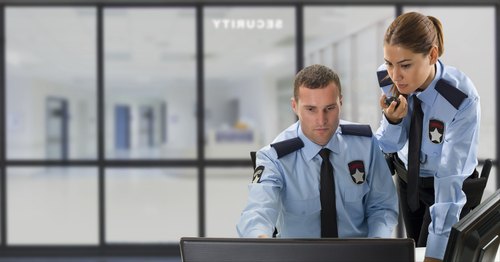Mastering Corporate Security: Proven Tactics for Company Protection
Mastering Corporate Security: Proven Tactics for Company Protection
Blog Article
From Cybersecurity to Physical Procedures: Strengthening Business Safety And Security in a Transforming World
In today's swiftly developing electronic landscape, the significance of company safety and security can not be overemphasized. As cyber risks come to be common and significantly advanced, companies must go beyond typical cybersecurity steps to secure their operations and properties - corporate security. This is where the integration of physical safety actions becomes vital. By combining the strengths of both cybersecurity and physical safety, business can develop a thorough defense technique that attends to the varied array of threats they deal with. In this discussion, we will certainly explore the altering danger landscape, the demand to incorporate cybersecurity and physical security, the implementation of multi-factor authentication steps, the value of worker understanding and training, and the adjustment of safety actions for remote labor forces. By checking out these key areas, we will certainly obtain valuable understandings right into just how companies can enhance their business safety and security in an ever-changing world.
Understanding the Transforming Risk Landscape
The progressing nature of the modern-day globe requires a detailed understanding of the transforming risk landscape for efficient company safety and security. It is crucial for organizations to stay educated and adjust their security measures to deal with these progressing risks.
One secret element of comprehending the altering hazard landscape is identifying the various kinds of hazards that organizations face. Additionally, physical hazards such as theft, vandalism, and corporate reconnaissance continue to be common problems for organizations.
Surveillance and analyzing the danger landscape is vital in order to determine prospective risks and susceptabilities. This entails remaining updated on the most recent cybersecurity trends, analyzing threat knowledge reports, and conducting regular risk evaluations. By recognizing the transforming danger landscape, organizations can proactively implement suitable safety and security measures to mitigate threats and safeguard their assets, credibility, and stakeholders.
Integrating Cybersecurity and Physical Protection
Incorporating cybersecurity and physical safety and security is crucial for comprehensive corporate protection in today's electronic and interconnected landscape. As organizations progressively depend on technology and interconnected systems, the borders between physical and cyber hazards are ending up being obscured. To efficiently safeguard versus these risks, an alternative method that combines both cybersecurity and physical safety measures is necessary.
Cybersecurity concentrates on protecting electronic properties, such as systems, networks, and data, from unauthorized accessibility, interruption, and burglary. Physical security, on the other hand, incorporates steps to safeguard physical assets, people, and facilities from hazards and vulnerabilities. By incorporating these 2 domain names, organizations can deal with vulnerabilities and hazards from both electronic and physical angles, thereby improving their overall protection stance.
The integration of these two self-controls enables a more extensive understanding of safety and security risks and enables a unified response to cases. As an example, physical access controls can be improved by integrating them with cybersecurity procedures, such as two-factor authentication or biometric recognition. Likewise, cybersecurity steps can be complemented by physical safety and security steps, such as monitoring cameras, alarms, and protected gain access to points.

Implementing Multi-Factor Authentication Measures
As companies progressively focus on extensive protection measures, one efficient strategy is the implementation of multi-factor authentication actions. Multi-factor authentication (MFA) is a safety approach that calls for users to supply numerous kinds of identification to access a system or application. This method includes an added layer of defense by combining something the user understands, such as a password, with something they have, like a finger print or a protection token.
By executing MFA, organizations can substantially improve their protection stance - corporate security. Traditional password-based authentication has its limitations, as passwords can be easily compromised or forgotten. MFA reduces these risks by adding an extra verification aspect, making it extra difficult for unapproved people to obtain accessibility to delicate details
There are a number of types of multi-factor authentication methods offered, including biometric authentication, SMS-based confirmation codes, and equipment symbols. Organizations need to evaluate their specific requirements and pick one of the most proper MFA option for their requirements.
However, the implementation of MFA need to be meticulously prepared and performed. It is vital to strike a Check Out Your URL balance in between protection and use to stop customer disappointment and resistance. Organizations ought to also take into consideration prospective compatibility issues and provide ample training and support to ensure a smooth change.
Enhancing Worker Awareness and Training
To enhance business protection, organizations should prioritize enhancing staff member recognition and training. Numerous security breaches happen due to human mistake or absence of recognition.
Effective employee awareness and training programs ought to cover a wide variety of subjects, consisting of information defense, phishing strikes, social design, password health, and physical security measures. These programs ought to be tailored to the particular needs and responsibilities of different employee roles within the organization. Regular training workshops, simulations, and sessions can aid workers establish the needed skills and knowledge to identify and react to safety risks efficiently.
Furthermore, organizations need to motivate a culture of security recognition and supply ongoing updates and suggestions to keep employees notified about the most recent dangers and mitigation methods. This can be done through interior communication networks, such as newsletters, intranet websites, and e-mail campaigns. By cultivating a security-conscious workforce, companies can substantially reduce the probability of safety and security cases and safeguard their beneficial assets from unapproved access or compromise.

Adapting Safety And Security Measures for Remote Workforce
Adjusting company safety procedures to suit a remote workforce is vital in making certain the protection of sensitive information and assets (corporate security). With the enhancing pattern of remote work, companies must execute suitable see this safety procedures to alleviate the threats related to this brand-new method of functioning
One vital element of adjusting safety procedures for remote work is establishing protected communication channels. Encrypted messaging systems and digital personal networks (VPNs) can assist safeguard sensitive information and prevent unapproved accessibility. Furthermore, organizations ought to enforce using solid passwords and multi-factor authentication to enhance the security of remote accessibility.
An additional crucial consideration is the implementation of safe and secure remote accessibility services. This involves giving staff members with protected access to company resources and information with virtual desktop computer facilities (VDI), remote desktop computer procedures (RDP), or cloud-based services. These technologies make certain that sensitive details stays protected while allowing staff members to do their functions effectively.

Last but not least, comprehensive safety and security understanding training is critical for remote employees. Training sessions ought to cover finest methods for firmly accessing and taking care of delicate details, identifying and reporting phishing attempts, and maintaining the overall cybersecurity hygiene.
Conclusion
Finally, as the danger landscape remains to advance, it is essential for organizations to enhance their safety and security determines both in the cyber and physical domains. Integrating cybersecurity and physical safety and security, executing multi-factor authentication steps, and enhancing employee awareness and training are essential steps in the direction of attaining durable business safety and security. Furthermore, adapting security actions to suit remote labor forces is necessary in today's transforming world. By executing these measures, companies can minimize dangers and safeguard their valuable properties from possible dangers.
In this discussion, we will certainly explore the transforming danger landscape, the need to incorporate cybersecurity and physical security, the execution of multi-factor authentication procedures, the significance of staff member awareness and training, and the adjustment of security procedures for remote workforces. Cybersecurity procedures can be enhanced by physical safety and security actions, such as monitoring electronic cameras, alarms, and safe accessibility points.
As companies significantly prioritize detailed security steps, official source one efficient approach is the implementation of multi-factor verification actions.In conclusion, as the hazard landscape continues to develop, it is vital for companies to strengthen their safety and security determines both in the cyber and physical domain names. Incorporating cybersecurity and physical security, executing multi-factor authentication procedures, and boosting staff member awareness and training are vital actions in the direction of attaining durable company security.
Report this page